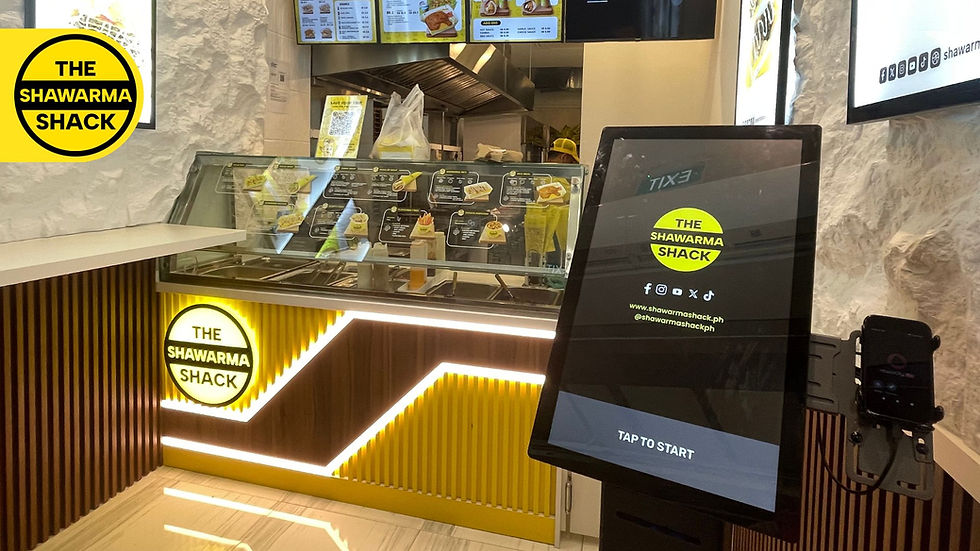Revolutionize Dining with Self-Ordering Kiosks
- EPOS Expert

- Aug 23
- 4 min read
The restaurant ordering experience is evolving rapidly, and technology plays a crucial role in this transformation. One of the most significant innovations reshaping how customers order food is the introduction of self-service kiosks. These interactive stations allow diners to place their orders independently, streamlining the process and enhancing convenience. This article explores how self-service kiosks are revolutionizing dining, their benefits, and practical insights for businesses considering their implementation.

The Rise of Self-Service Kiosks in the Food Industry
Self-service kiosks have become increasingly popular in restaurants, cafes, and fast-food chains worldwide. These digital ordering stations offer a user-friendly interface where customers can browse menus, customize orders, and pay without waiting for staff assistance. Several factors drive the rise of these kiosks:
Speed and Efficiency: Kiosks reduce wait times by allowing multiple customers to order simultaneously.
Accuracy: Orders placed directly by customers minimize errors caused by miscommunication.
Cost Savings: Businesses can optimize labor costs by reallocating staff from order-taking to other tasks.
Customer Engagement: Interactive screens can display promotions, upsell items, and provide nutritional information.
By integrating self-service kiosks, restaurants can meet the growing demand for quick, contactless, and personalized service.

Benefits of Self-Service Kiosks for Restaurants and Customers
Implementing self-service kiosks offers numerous advantages for both businesses and diners. Understanding these benefits can help restaurant owners make informed decisions about adopting this technology.
For Restaurants
Increased Order Accuracy
Customers input their orders directly, reducing mistakes caused by verbal miscommunication. This leads to higher customer satisfaction and fewer order corrections.
Higher Revenue Potential
Kiosks can suggest add-ons and upgrades during the ordering process, encouraging customers to spend more. Studies show that self-service kiosks can increase average order value by up to 20%.
Operational Efficiency
With kiosks handling order placement, staff can focus on food preparation and customer service, improving overall workflow.
Data Collection and Insights
Digital ordering systems collect valuable data on customer preferences and peak times, enabling better inventory management and targeted marketing.
For Customers
Convenience and Control
Diners can take their time to explore the menu, customize orders, and avoid long lines.
Contactless Experience
Especially important in health-conscious times, kiosks reduce physical interaction, promoting safety.
Faster Service
Orders are sent directly to the kitchen, speeding up preparation and pickup.
Accessibility
Many kiosks offer multiple language options and easy-to-navigate interfaces, catering to diverse customer bases.

What Restaurants Have Self-Ordering Kiosks?
Many well-known restaurant chains and independent eateries have embraced self-service kiosks to enhance their customer experience. Here are some examples:
Fast Food Chains: Major brands like McDonald's, Burger King, and Wendy's have installed kiosks in numerous locations worldwide. These kiosks allow customers to customize burgers, select combo meals, and pay quickly.
Casual Dining: Restaurants such as Panera Bread and Shake Shack use kiosks to streamline ordering during busy hours, reducing wait times.
Coffee Shops: Starbucks and other coffee chains have introduced kiosks for ordering drinks and snacks, allowing customers to skip lines.
Cinema Concessions and Food Courts: Many cinemas and mall food courts use kiosks to handle high volumes of orders efficiently.
Local and Regional Eateries: Smaller restaurants are also adopting kiosks to stay competitive and offer modern conveniences.
The widespread adoption across various dining formats highlights the versatility and effectiveness of self-service kiosks.
How to Implement Self-Service Kiosks in Your Restaurant
For businesses considering the integration of self-service kiosks, a strategic approach is essential to maximize benefits and ensure smooth adoption.
Step 1: Assess Your Needs and Goals
Identify peak hours and customer flow to determine the number of kiosks required.
Define objectives such as reducing wait times, increasing order accuracy, or boosting sales.
Step 2: Choose the Right Technology
Select kiosks with intuitive interfaces and reliable hardware.
Ensure compatibility with your existing POS system.
Consider features like multi-language support, accessibility options, and payment methods.
Step 3: Design an Engaging User Interface
Use clear visuals and simple navigation.
Highlight popular items and promotions.
Allow easy customization of orders.
Step 4: Train Staff and Inform Customers
Train employees to assist customers unfamiliar with kiosks.
Use signage and announcements to encourage kiosk use.
Step 5: Monitor and Optimize
Collect feedback and analyze usage data.
Update menus and promotions regularly.
Address technical issues promptly.
By following these steps, restaurants can successfully integrate self-service kiosks and enhance the dining experience.
Future Trends in Self-Service Kiosk Technology
The future of self-service kiosks looks promising, with ongoing innovations set to transform dining further.
AI and Personalization: Artificial intelligence will enable kiosks to offer personalized recommendations based on past orders and preferences.
Integrated Payment with Softpos: Advanced payment technology is now integrated directly into the self-service kiosk to simplify kiosk maintenance and lower costs.
Voice Ordering: Voice recognition technology may allow customers to place orders hands-free.
Mobile Integration: Combining kiosks with mobile apps can provide seamless ordering and payment options.
Enhanced Accessibility: Features like screen readers and adjustable heights will make kiosks more inclusive.
Sustainability: Eco-friendly kiosk designs and digital receipts will support environmental goals.

Staying informed about these trends can help businesses remain competitive and meet evolving customer expectations.
Embracing a self-ordering kiosk system is a smart move for any dining establishment aiming to improve efficiency and customer satisfaction. By leveraging this technology, restaurants can offer a modern, convenient, and engaging experience that keeps customers coming back.



Comments